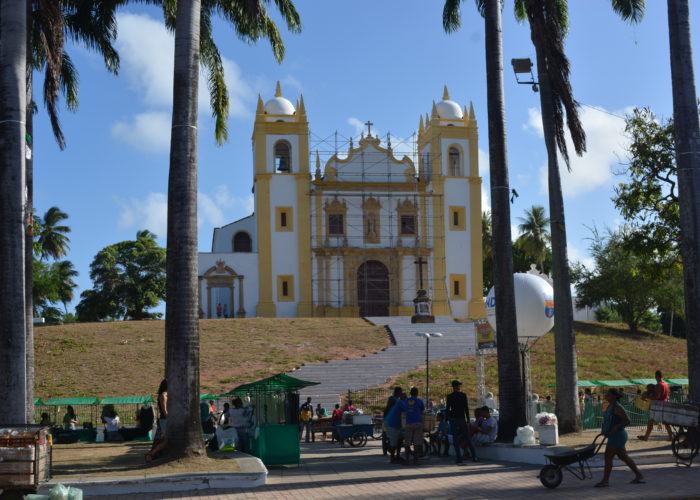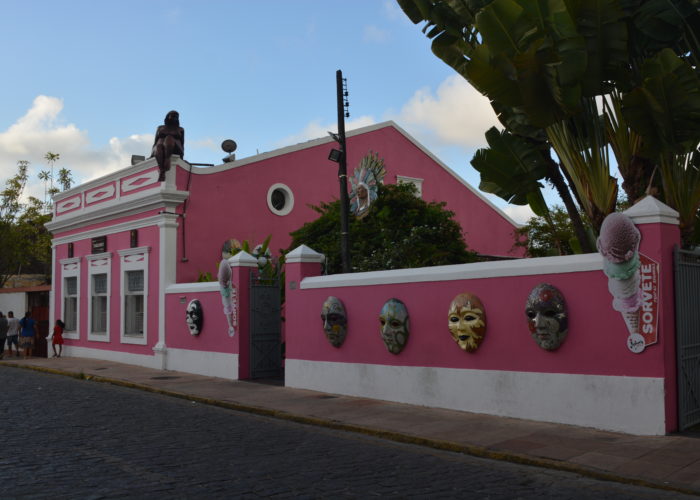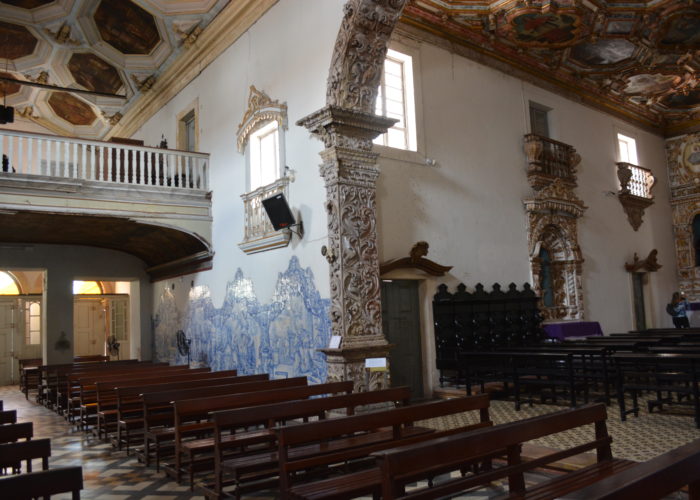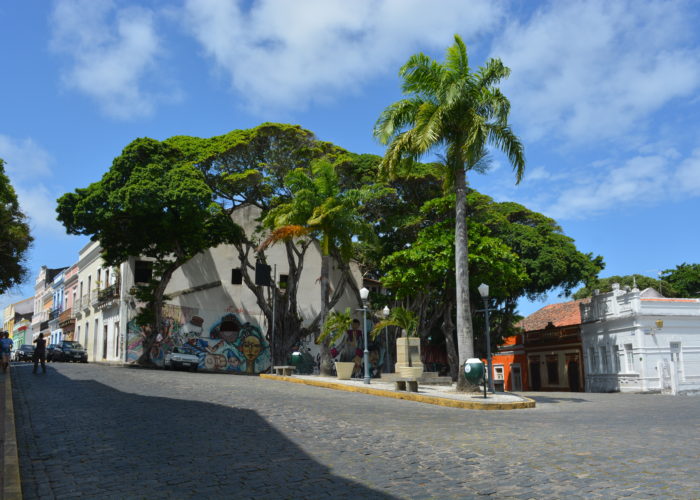Our Dragoman journey through Northern Brazil continued into the state of Pernambuco, where the colonial city of Olinda became our next stop. Located just 7 kilometres north of Recife, Olinda has earned a prestigious status as a UNESCO World Heritage Site (since 1982) for its exceptionally well-preserved colonial architecture and vibrant cultural traditions. With a population of around 390,000, Olinda has managed to balance its proximity to the larger metropolis of Recife while preserving its unique historical charm.
Geography & Climate
Olinda is located on Brazil’s northeastern coast, sitting on a series of small hills overlooking the Atlantic Ocean. The city’s main feature is the small hill of Alto da Sé, which provides spectacular views of both the colonial town and the modern skyline of Recife. Olinda’s climate is tropical, characterised by warm temperatures year-round, with the rainy season typically occurring from March to August. Average temperatures range between 24°C and 30°C, making it a comfortable destination for most of the year.
History & Economy
Founded in 1535 by the Portuguese, Olinda rapidly became a centre for sugar cane production, making it one of Brazil’s wealthiest colonial towns. However, it suffered a major setback during the Dutch occupation (1630-1654), when much of the city was destroyed by fire. Following the Dutch expulsion, Olinda was rebuilt, and its economy continued to thrive, largely thanks to its close ties with the port of Recife.

Today, Olinda’s economy is closely tied to tourism, arts, and crafts, with the city’s cultural festivals drawing visitors from across Brazil and abroad. Its proximity to Recife makes it part of a larger economic area, with many residents commuting to the larger city for work. Olinda’s streets are filled with art galleries, crafts shops, and vibrant street markets, contributing to a local economy heavily reliant on artisanal trades and tourism.
Key Sites
Olinda is known for its remarkable collection of churches, convents, and colonial-era buildings. Each site tells a story of the town’s rich cultural and religious history.
Alto da Sé: This hilltop is the heart of Olinda, offering panoramic views over the old city, the ocean, and the skyline of Recife. It’s an ideal spot to spend an evening, sipping on potent caipirinhas or other fruit-based drinks from hawker stalls. The Igreja da Sé (Sé Church), located here, was one of the earliest churches in Brazil, first built in 1537. The view at sunset is a highlight, with the skyline of Recife glittering in the distance.
Convento de São Francisco: This 16th-century convent (founded in 1577) is Brazil’s oldest Franciscan monastery. Its interiors are a highlight, featuring elaborate azulejos (blue and white Portuguese tiles) that depict religious scenes, a stunning cloister, and well-preserved wood-carved altarpieces. It’s a peaceful retreat in the middle of the bustling city.

Basílica de São Bento: One of Olinda’s finest churches, São Bento was founded in 1599 and boasts a richly decorated Baroque interior. Its gilded altar, one of the most impressive in Brazil, was awarded a gold medal at the 1873 Vienna World Fair.

Igreja do Carmo: This church, located near the sea, dates back to 1580 and features a recently restored altarpiece, glittering with gold leaf. The simple exterior belies the beauty of its interior wood carvings and sacred artwork.
Igreja do São Salvador do Mundo: Also known as the Igreja da Sé, this church sits at the highest point of Olinda, offering commanding views. Originally built in the 16th century, it was rebuilt after being destroyed by the Dutch. The views from here stretch all the way to the coastline, making it a must-visit for photographers.
Rua do Amparo: A walk along this historic street brings you past some of the best-preserved colonial buildings, now home to artists’ workshops, cafés, and small galleries. The pastel-coloured facades are iconic, providing great photo opportunities.
Bar Scene and Festival of Tapioca: Olinda is known for its lively nightlife, particularly around the Alto da Sé. Bars spill out onto the streets, filled with the sounds of live music, laughter, and the clinking of caipirinhas being served. During our visit, the city was hosting the Festival of Tapioca, a celebration of one of Brazil’s staple foods, where dozens of stalls offered creative tapioca dishes. The festival atmosphere was enhanced by an impromptu carnival parade featuring large puppets parading through the streets, creating a mini-celebration that captivated locals and visitors alike. Brazilian TV crews were on hand to broadcast the festivities, showcasing the vibrant culture of Olinda to a wider audience. This combination of culinary delight and festive spirit truly exemplifies Olinda’s unique charm and its connection to Brazil’s rich cultural tapestry.

Environment
Although Olinda is now a modern city, it has managed to maintain a strong connection to its colonial past. The city is filled with green spaces and is perched on hills that provide cool breezes and sweeping ocean views. Environmental efforts have focused on preserving the cultural landscape while allowing for sustainable tourism. The proximity to the coastline offers access to sea breezes and views, while the green, hilly terrain provides a pleasant contrast to the dense urban sprawl of Recife.

Final Thoughts
Olinda is an excellent example of a Brazilian colonial city that has managed to preserve its history while adapting to the modern world. Its unique blend of UNESCO-protected architecture, vibrant festivals, and cultural traditions makes it a must-visit destination for anyone interested in Brazil’s rich history. With its panoramic views, well-preserved churches, and lively street culture, Olinda is a perfect spot to explore the country’s colonial past while enjoying the contemporary Brazilian way of life.
Dates: 02/11/2018 to 04/11/2018 – Dragoman Days 13 to 15












